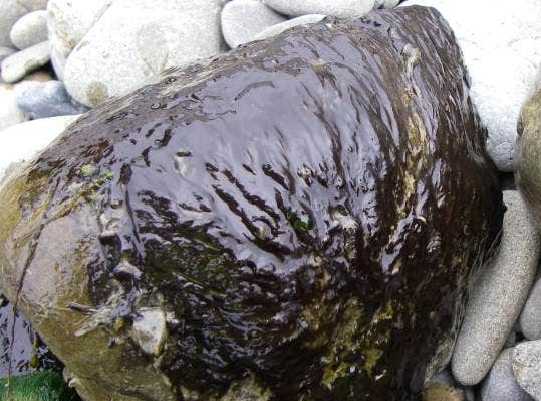Naturally occurring potentially toxic algae can bloom in many Otago rivers and lakes during the warmer months, and can be deadly if consumed by dogs.
Phormidium can be identified by its thick, dark brown mats on rocks in the riverbed, and can sometimes look like black tar. In the flow of water, Phormidium mats detach from the riverbed and wash up on riverbanks. Its musty smell is particularly attractive to dogs and, if eaten, Phormidium can result in severe poisoning or death.
Water Quality Scientist Rachel Ozanne said it was important that dog owners learn to identify toxic algae.
“This Phormidium bloom has appeared fairly early on in the season, so people may not be on the look-out for toxic algae yet. If you are walking your dog near any river or waterway in the warmer months – anywhere in New Zealand – it’s crucial that you identify toxic algae and keep your dog well away.
“Any human experiencing a reaction from contact with toxic algae should seek urgent medical attention, and any signs that a dog may have consumed Phormidium, such as lethargy, muscle tremors, fast breathing, twitching, paralysis and convulsion, should be treated as an emergency and referred to a vet immediately.”
Potentially toxic algae can emerge anywhere along rivers, so is not part of an active monitoring programme. Phormidium was identified at the Gordon Road environmental monitoring site, but is likely present at more locations throughout the Silver Stream.
With increasing temperatures and sunlight hours, Phormidium is likely to start blooming in North Otago (particularly the Waianakarua) and Central Otago (particularly the Cardrona and Manuherekia Rivers).

“This sighting should remind people that, between now and next autumn, you need to be on the look-out for potentially toxic algae, and to keep a close eye on four-legged friends to keep them safe and healthy,” Ms Ozanne said.
To learn more about potentially toxic algae, including how to identify algal blooms in rivers and lakes, see the LAWA factsheet.
To report algal blooms in Otago lakes and rivers, contact the pollution hotline: 0800 800 033.
